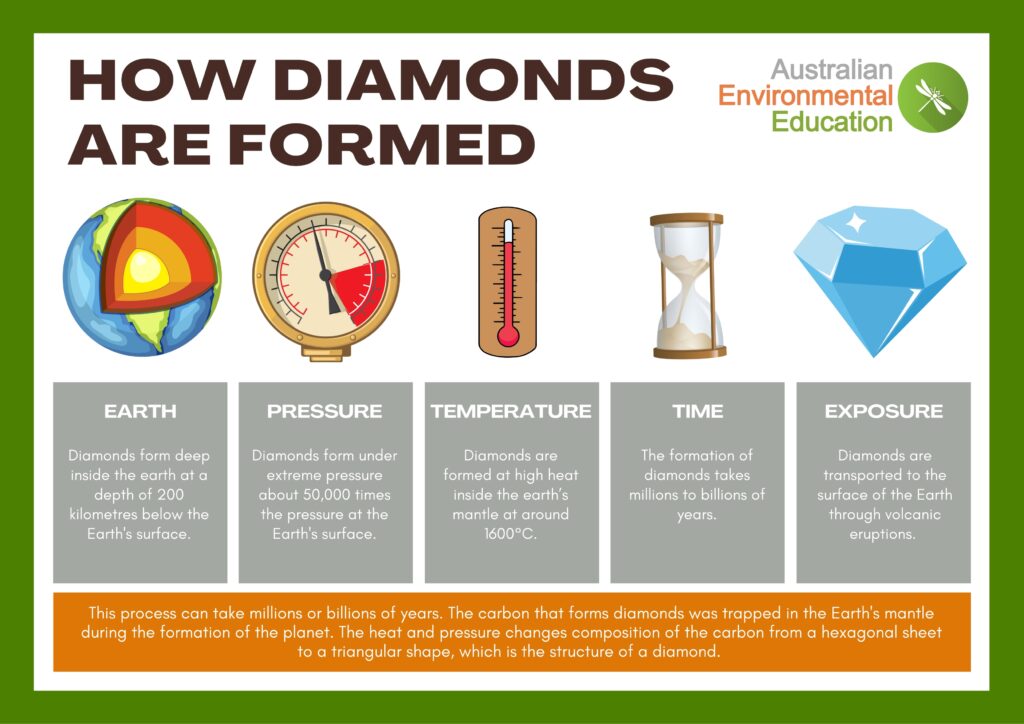Diamonds are a naturally occurring form of carbon, renowned for their exceptional hardness, brilliance, and rarity. They are formed deep within the Earth’s mantle under high pressure and temperature over millions to billions of years and are brought to the surface through volcanic activity.
Diamonds are formed when carbon atoms bond together under intense heat and pressure deep within the Earth:
- Pressure: About 50,000 times the pressure at the Earth’s surface
- Temperature: Around 1600°C
- Depth: Around 200 kilometres below the Earth’s surface

This process can take millions or billions of years. The carbon that forms diamonds is trapped in the Earth’s mantle during the formation of the planet. The heat and pressure change the carbon’s composition from a hexagonal sheet to a triangular shape, which is the structure of a diamond.
Once formed, diamonds are transported to the surface of the Earth through volcanic eruptions. These eruptions occur when a part of the mantle melts into magma and rapidly erupts. The magma cools and hardens into kimberlite, a rock that contains diamonds. These kimberlite pipes are the primary source of natural diamonds. However, only about 1% of discovered kimberlite pipes are economically viable.
Diamonds are commonly used in jewellery, prized for their sparkle and durability, and are graded based on the “Four Cs”: Carat weight, Cut, Colour, and Clarity.
Beyond their aesthetic value, diamonds have industrial uses, such as cutting, grinding, and drilling tools, due to their unmatched hardness. Synthetic diamonds, created through high-pressure, high-temperature (HPHT) or chemical vapor deposition (CVD) processes, offer cost-effective alternatives for industrial and gem applications.
Diamonds have cultural significance, often symbolizing love and commitment, but their mining and trade have raised ethical concerns, including environmental impact and human rights violations in conflict zones.

